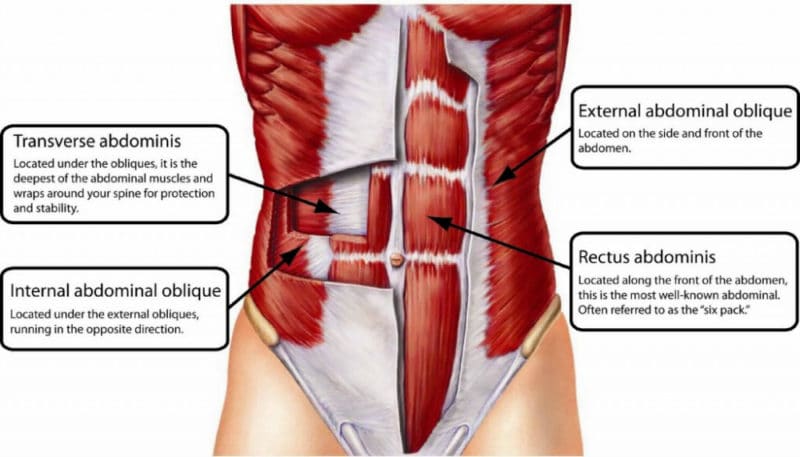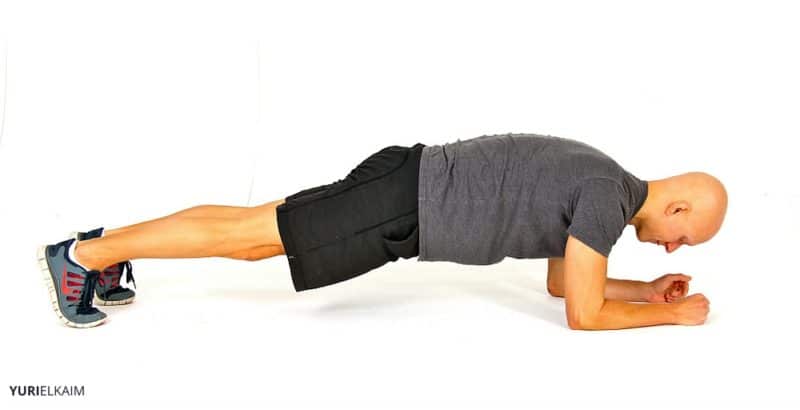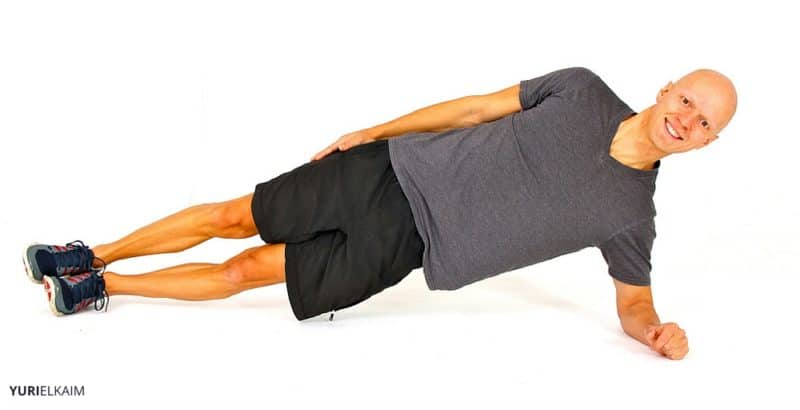Today we’re going to be talking about the very important difference between different types of abdominal exercises, and just what you need to know if you’re getting started off with an core training routine.
In this article
How do you know if you’re a beginner when it comes to core training?
Try this: if you touch your abdominals right now, and they are not rock-solid, then that’s an indication you’re at the beginning of the spectrum of abdominal and core training.
Now, you may have strong abs, but that doesn’t necessarily mean that you have balanced and healthy abs or healthy core muscles. It might simply mean you’re a little bit more advanced.
For example, I’ve worked with a lot of clients and friends who spend all their time with their abdominal exercises, just doing sit-ups and variations of sit-ups such as twisting, bicycle crunches, leg lifts, etc.
Their abs are certainly strong, but is their deep core really healthy? Are they protecting their spine in the long run? I understand that you may want sexy abs or a six-pack, but your core health is far more important than that.
The Importance of a Healthy Core
A healthy core is important because if you don’t have one, you’ll start creating muscle imbalances over time. Let’s jump into this here. I’m gonna talk about the difference between two very important notions in core training.
First of all, what you have buried underneath your belly isn’t a six-pack, but an eight-pack, that’s just one section of a larger muscle called your rectus abdominis.
Typically, we’ve thought of these muscles as motion-based muscles. However, they also prevent excessive extension. For instance, if somebody came to you and said, “Hey, dude, I have a beef to pick with you,” and they pushed your chest back, the first muscles to respond to prevent you from falling back would be your rectus abdominis.
Essentially, they’re your stabilizers.
I’m going to argue that as a beginner—and really anyone starting off with any kind of core-training program—you need to focus on stability before movement because if you create movement-based patterns and develop muscles for dynamic and movement reasons only, you’ve lost your stability, which is the foundation of anything you do.
It’s like building a house on quicksand. You can build a six-story tall mansion with 20 bedrooms, but if the foundation is built on quicksand, or if you have termites eating away at the foundation, it’s going to crumble.
The foundation is stability. You need to build that stability in your core.
What’s Really Going on in Your Core
As I mentioned before, there are a lot more muscles in your core than just your six-pack.
We have the rectus abdominis, which are our eight-pack muscles. We have the transverse abdominis around your waist, which is one of the deepest muscles in the core. We also have our internal and external obliques, which are those oblique, diagonal fibers running along the side of the core.
There’s also the quadratus lumborum, which is a muscle you’ve probably never heard of. It’s attached to the lumbar spine and the sacrum. Next, you have the multifidus and all sorts of smaller muscles through the core, through the back—all of these muscles make up your core.
The core is any muscle that crosses the shoulder or hip joint. That’s a lot of musculature. Technically, some of the rotator cuff muscles, the chest muscles, your lats, pretty much all the muscles in your torso can be considered part of the core, and that’s what I define as the core. It’s not just the abdominal muscles; it’s a lot more.
However you define the core, it’s a lot more inclusive than just an eight-pack.
Here’s the problem: for most people, ab training is simply a matter of doing sit-ups, but those are especially ineffective because you’re only tackling one set of muscles. Over time this can create an imbalance in your core, which can in turn lead to postural problems, lower-back problems, pain and discomfort.
[Related: The 10 Worst Ab Exercises That Waste Your Time and Kill Your Spine]
The idea here is that you can still get six-pack abs or a flat stomach or lose belly fat by training properly which will primarily develop your stability. Let’s look at how you can do just that.
How to Train Your Core for Stability
One of the “core” exercises of a good ab training routine is the basic plank.
It’s essentially putting your body into the push-up position, except you’re not lowering yourself to the ground. How long can you hold it for? Anything less than two minutes is a risk factor for potential low-back issues in the future.
The next thing you want do is a side bridge or a side plank. It’s kind of similar, but this time you’re on your side and you have your forearm directly underneath your shoulder, propping your body up.
Once you’ve tried a basic plank followed by side planks on both your right and left sides, you will likely find that one side or position is weaker than the other. This is to be expected.
In 99 percent of the people that I’ve ever worked with, there’s usually an imbalance. One side is easier to do than the other, and that’s probably caused by years of holding something in one hand or on one side of the body as opposed to the other, or focusing on doing specific things on one side more than the other.
Once you’ve developed base strength through planks and other stability exercises, you can move into some more dynamic ab training stuff.
Core Training Suggestions
What I’d like you to do is to focus on stability first, then movement second.
How long do you focus on stability for? Well, it depends on the individual, but I would suggest starting off with stability exercises like planks, side planks, bird dogs, knee-drive holds. You can do that two to three times a weeks for a month.
Once you get into more movement based ab training exercises, you should still avoid sit-ups. Trust me on this one. I don’t do sit-ups.
Remember, this is not about developing a six-pack that you can show off. If you want to do that, your core training has to be accompanied by overall strength training, a fat-burning diet and interval-training workouts; that’s gonna burn the fat.
This is about ensuring that you have a strong, balanced core that will carry you through your life without unnecessary injury or pain. I hope this has opened your eyes to just how amazing your core truly is, and why you must look after it.
Enjoy This Article?
Did you enjoy this article on ab training? If so, and you’re eager to take your abs and core to the next level, grab my FREE report called The Flat Stomach Secret. It’s packed with 7 unknown ways to lose belly fat and get amazing abs.



